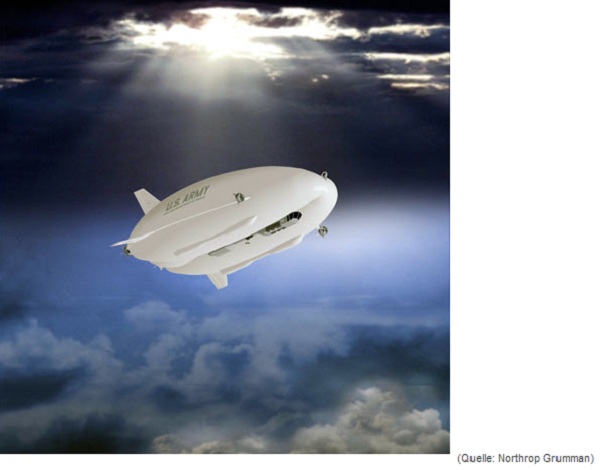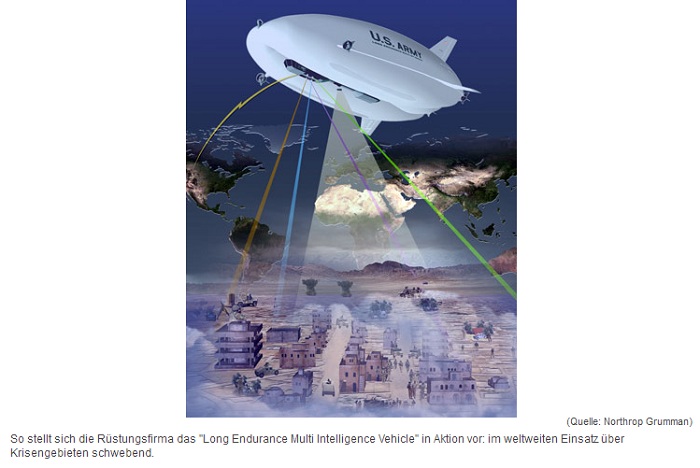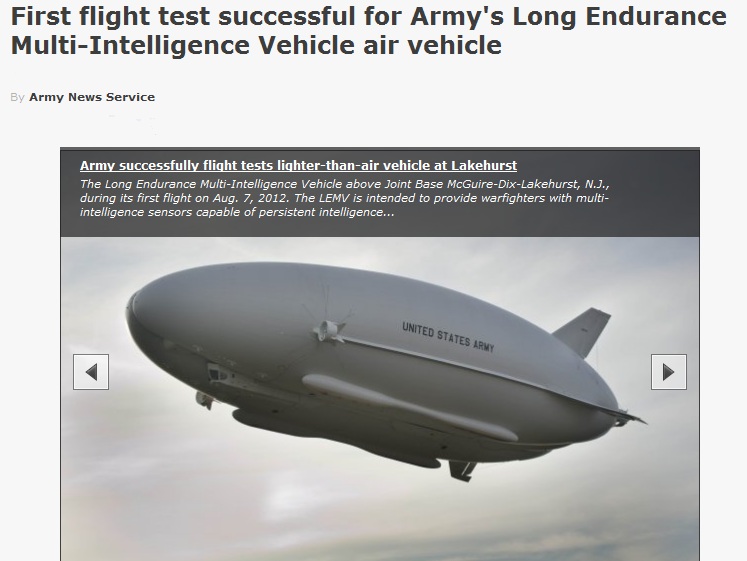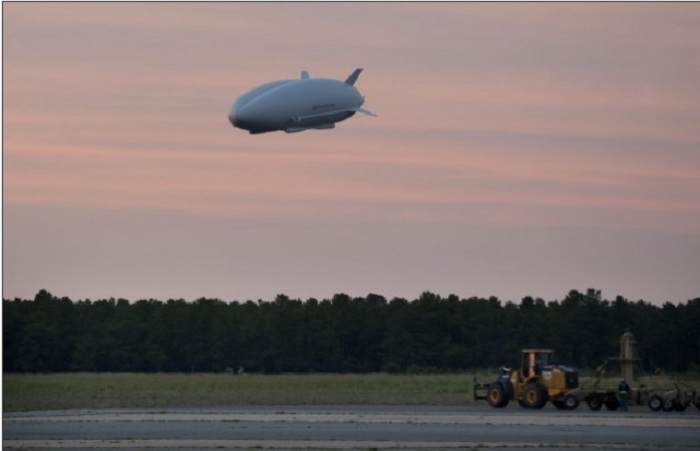-

Das "Long Endurance Multi Intelligence Vehicle" soll 92 Meter lang sein (Quelle: Northrop Grumman)
Das Projekt ist äußerst geheim: Das "Long Endurance Multi Intelligence Vehicle" kann wochenlang in großer Höhe schweben. Mögliches Einsatzgebiet: Afghanistan. Der Antrieb stammt aus Deutschland.
In aller Stille haben die US-Streitkräfte das weltweit größte Spionageluftschiff in einem gut anderthalbstündigen Erstflug getestet. Am vergangenen Dienstag, 7. August, hob von einem Militärflughafen in Lakehurst im US-Bundesstaat New Jersey das Spezialluftschiff ab. "Alle Ziele wurden während des Fluges erreicht", teilte ein Sprecher der US-Streitkräfte am Mittwoch auf FTD-Anfrage mit.
Zunächst sei es darum gegangen, einen sicheren Start und eine sichere Landung zu absolvieren und die Flug-Kontrollsysteme zu erproben. Das in der Fachwelt als LEMV (Long Endurance Multi-Intelligence Vehicle) bezeichnete Luftschiff hat nach Angaben aus Branchenkreisen eine Länge von gut 92 Metern.
Neue Epoche der Luftaufklärung
Es ist damit das aktuell größte fliegende Luftschiff. Es läutet nach Jahrzehnten die Rückkehr der US-Militärs beim Einsatz großer Luftschiffe für Militäraufgaben ein. In den 30er-Jahren hatten die USA sogar Luftschiffe als fliegende Flugzeugträger im Einsatz. Das LEMV-Projekt ist auch eine neue Epoche in der Aufklärung aus der Luft an Stelle unbemannter Drohnen.
-

Northrop Grumman’s open architected Long Endurance Multi Intelligence Vehicle (LEMV) is a revolutionary aviation concept that will shape the future of ISR. We’ve developed a clean aerodynamic design with less drag than competing designs, use existing proven hull materials, a type certified engine, off-the-shelf sensors, and the Army’s Universal Ground Control Station with 100% interoperability with DCGS-A. We integrate ISR payloads most efficiently through our Murphy Bay on the vehicle centerline. Every design tradeoff was made with an unyielding commitment to schedule. Our open architecture and business model invites third parties to get onboard the aircraft with limited interference, weapon system, balanced by its elegant simplicity.
Key Features
• Simple, non-exotic solutions with proven components
• Energy efficient. Fuel consumption more than 10x less than comparable capability
• 12-24 forward deployed crew members to support 18 vehicles 24/7/365
• 1,500nm – 2,400nm range with 15,000 lbs (Heavy Lift Configuration)
• More than 21 days endurance with 2,750 lbs payload (ISR Configuration)
• Payload Volume more than 2,700 cubic feet, heavy lift yield additional volume
• Service Ceiling greater than 22,000 ft. MSL
• Loiter/dash speed: 30/80 kts
Capabilities
• More than 21 days of unblinking stare
• Proven multi-INT payload integration
• Multi-mission capable: persistent surveillance, force protection, counter-drug operations,
• Support host nation ops, disaster, humanitarian relief, overwatch/support troops
• Flexible Murphy Bay modules to accommodate current and future payloads
• Very short or vertical takeoff, excellent ground stability
• Bow thruster provides low-speed control and position hold capability
• Leverage proven type-certified engine
• Future growth accomplished through field installations
• Radar, SIGINT, Full Motion Video, LOS/BLOS COMM Relay
-----------------------------------------------------------------------------------------------------------------------------------------------------------------------------------

WASHINGTON (Army News Service, Aug. 8, 2012) -- For more than 90 minutes, Aug. 7, the hybrid air vehicle known as the Long Endurance Multi-Intelligence Vehicle stayed afloat above Joint Base McGuire-Dix-Lakehurst, N.J.
The Long Endurance Multi-Intelligence Vehicle, or LEMV, like a blimp, is capable of carrying multiple intelligence, surveillance and reconnaissance payloads for more than 21 days at altitudes greater than 22,000 feet. The U.S. Army Space and Missile Defense Command/Army Forces Strategic Command conducted the first flight test of vehicle.
"Murphy Bays" on the LEMV on the LEMV can carry a wide variety of sensors and equipment, and design specifications for the LEMV require the vehicle to provide up to 16 kilowatts of electrical power for those payloads.
The LEMV is intended to be used to conduct long-term Intelligence, Surveillance, and Reconnaissance, or ISR, and persistent stare-type missions, and can also be used as a communications relay.
The primary objective of the first flight was to perform a safe launch and recovery of the LEMV. A secondary goal was to verify the flight control system operation. Additional objectives included airworthiness testing and demonstration, as well as system-level performance verification.
All objectives were met during the first flight.
The football field-sized LEMV can operate at altitudes greater than 22,000 feet above mean sea level, has a 2,000 mile radius of action, can carry a 2,750 pound ISR payload for more than 21 days, and boasts a fuel consumption that is more than 10 times less than comparable capabilities.
Design requirements for the LEMV include providing up to 16 kilowatts of electrical power for payload, as well as runway independence.
The LEMV is designed to be a recoverable and reusable multi-mission platform. It can be forward located to support extended geostationary operations from austere locations and capable of beyond-line-of-sight command and control.
During this first flight, the LEMV was manned, though the air vehicle can also operate unmanned.
Following a planned and detailed inspection of the vehicle, there will be additional manned flights.
Quelle: US ARMY
-

